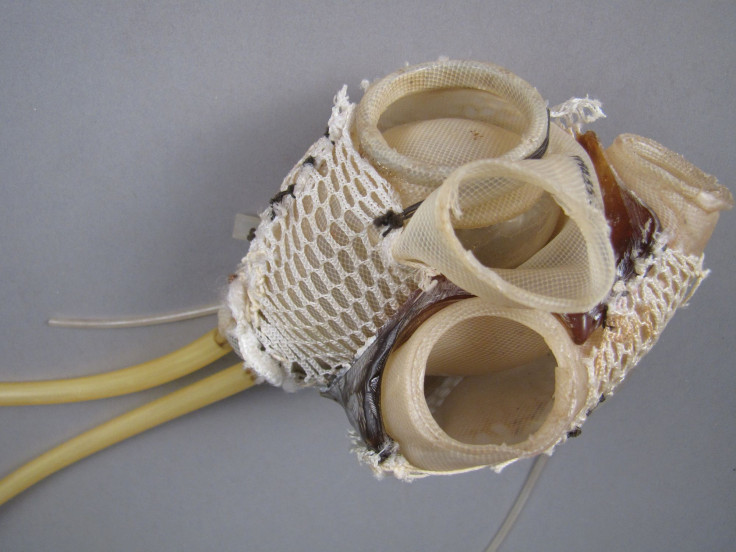New Bionic Heart 'Propels' Blood Instead Of Pumping It, And It May Revolutionize Transplants

Imagine if the human body were similar to a car: As it gets older and parts stop working, you could just send it to the repair shop and have those parts replaced. That’s the notion behind bionic organs, or essentially replacement mechanical organs that could work better and longer than a person’s failing biological ones.
Now, researchers believe they’ve come close to developing the first bionic heart — and, strangely enough, it won’t be like a regular heart. The bionic heart, known as the BiVACOR, won’t pump blood through a person’s veins through beating. Instead, it will “propel” blood through the body through silver tubes. It’s meant to be a form of treatment for people with heart failure, a chance for them to get a new, stronger heart that can last them much longer and be more reliable.
“The device has performed in many respects better than any artificial heart anybody has come up with in the last 50 years,” Cohn told ABC News. He believes it’s the “first legitimate shot on goal for a permanent mechanical replacement for the failing human heart.”
The average human heart beats 42 million times per year, meaning that a potential bionic heart would have to account for that large number of pumps — and it’s likely it would quickly wear out, according to Dr. William Cohn, the chief medical officer of BiVACOR who is currently working on the new bionic heart. That’s why Cohn and his team aim to develop a bionic heart that wouldn’t require beating in order to flush blood throughout the body and reach every limb and finger and toe.
On BiVACOR’s website, the researchers note that the new machine would provide “powerful” centrifugal pumps,” as well as “smart controllers” that are able to adapt to a person’s physical activity level. The device is also small enough for a child, and is expected to work five to 10 years.
It sounds crazy, and it may be a while before the BiVACOR team, led by Cohn and Australian researcher Daniel Timms, will be able to put the heart into place in humans. But for now, they’re studying it in large animals — who have been able to walk on treadmills and live for a month before the researchers kill them in order to examine the effects of the device on the rest of the body. Cohn claims that “kidney function, lung function, everything works beautifully throughout,” according to ABC News.
Since 1982, when the first artificial heart was successfully transplanted in a patient, researchers from all over the world have tried to develop a better and more reliable version of a transplanted mechanical heart. There are currently over 4,000 people in the U.S. waiting for heart transplants; the BiVACOR team hopes that their device will eventually assist in alleviating that number.



























